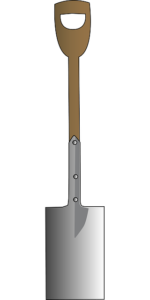No-Dig gardening is said to produce enough plant food, soil aeration and friability for good plant growth, and it’s better for your back than digging.
How It Works

In autumn spread a layer of well-rotted organic matter to a depth of about one inch over the ground.
Minimum disturbance of the soil surface is essential.
This undisturbed layer acts as a surface mulch, helping to suppress weeds. Any weeds that appear must be pulled out rather than hoed.
Allow time for the worms to pull this material down from the surface, as this improves soil structure and fertility.
Plant in the underlying soil.
If sowing seeds, scrape away the mulch to sow directly into the soil, and then replace.
You’ll still need to water crops regularly in a no-dig system.
Poor soils take longer to improve, so the system is most effective when applied to a well-structured soil.
Most gardeners prefer the traditional method of digging, as it breaks up compacted ground and exposes soil pests to predators and to cold weather.

